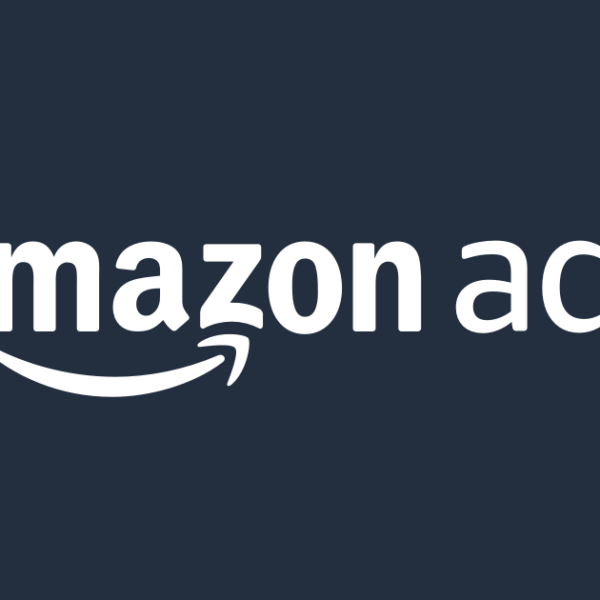We’ve all heard about Google Ads. It’s an old friend, and we like it in almost every way. We may eventually cease referring to it as AdWords. But here’s a question we frequently get from advertisers:
What are the signs that you’ve outgrown Google Ads?
That isn’t to say there isn’t something wrong with it. A lot of people use Google Ads in some form or another, whether it’s for search, display, or video. The more prevalent topic is how to best deploy ads in scalable ways for maximum reach and efficiency. This article will teach you how to ask the appropriate questions in order to find the best solution for you and your company.
For those wishing to take their programmatic efforts to the next level, Display & Video 360 is nearly always the better option, while the Google Display Network is a solid offering for those just getting started with programmatic.
What is the Google Marketing Platform?
Google Marketing Platform is a solution for businesses who have too many tools on too many platforms, each of which is trapped in its own silo and cannot communicate with the others. The platform, which is centered on Google Analytics 360’s tremendous reporting power, connects several different technologies to:
- Streamline data sharing
- Personalize, test, and market in real time
- Provide consistent outcomes.
These interconnected solutions, when used in conjunction with our integrated analytics and marketing strategy services, can help you better understand your consumers and their behavior, as well as improve your capacity to use data to make educated decisions and better manage your investments.
Google Ads is a self-service Search Engine Marketing (SEM) platform that also gives users access to the Google Display Network (GDN). The Google Display Network (GDN) is Google’s own advertising network of ad-enabled websites from around the world. It’s a terrific area for advertisers to try out basic retargeting and display advertising tactics. YouTube inventory is also available through the Google Ads network and can be acquired programmatically.
What is DV360 and How Is It Better ?
The No. 1 rated DSP on the market, Google’s agency-grade media management platform Display & Video 360, offers a slew of enterprise features and management tools for accessing, buying, and understanding attribution across networks.
To summarize, the platform provides significantly more Internet reach, the ability to run Private Marketplace partnerships with publishers, far more campaign settings and controls to manipulate, comprehensive reporting capabilities, and more.
Reach and ad formats that are impressive
Display & Video 360 (DV360) targets over 80 mobile, desktop, and Connected TV (CTV)/Over-The-Top (OTT)/Linear TV ad exchange networks with higher-quality ad inventory that covers 90% of the web as a top-rated demand-side platform. It goes without saying that comparing the GDN’s reach to the reach of 90% of the internet is difficult. Consider this the first and most significant selling point—there isn’t much else to say about it.
DV360 also offers CTV/OTT video buys, television commercials, audio ads, and a variety of additional ad options, whereas Google Ads and the GDN only allow for basic display ads, retargeting, and limited video placements. DV360, unlike any other DSP, also offers YouTube inventory, along with critical capabilities that Google Ads lacks.
Access to many ad types like this is vital to any organization’s marketing efforts in today’s developing digital marketplace, and having them all in one platform is a good bonus.
Marketplace allows you to purchase publisher placements.
Advertisers can quickly browse and discover high-quality, fraud-free inventory from prominent broadcasters and publishers, Google media, and curated inventory packages using DV360’s “Marketplace.” Deals can be negotiated directly, even for traditional TV, and purchases can be made swiftly and efficiently.
Publishers can use Programmatic Direct, also known as Private Marketplace (PMP) transactions, to put their premium inventory on a programmatic platform. Advertisers benefit from all of programmatic’s features, and publishers may monetize their best inventory without lowering CPMs. GDN does not provide discounts from the marketplace.
The “Programmatic Guaranteed,” or “PG,” transaction is one sort of private deal that has gained a lot of traction. A publisher and advertiser agree on a specific price, CPM, and impression volume over a set period of time in PG transactions, which are similar to traditional media direct buys. The difference with DV360’s version is that the procedure is faster, easier, and completely integrated into the platform. Traditional reservation purchases might include as many as 40 steps and a significant amount of operational overhead.
Other deal types, such as private auctions or preferred agreements, are also accessible through the Marketplace, where an advertiser can compete for publisher inventory against a small number of other advertisers. These types of offers don’t guarantee impression volume or pricing, but they can be a terrific method to get access to high-quality merchandise at a lesser price. The process of setting up these trades is made simple and quick using the DV360 marketplace.
It’s tough to overlook how popular CTV and OTT inventory have become in today’s marketing landscape. Thousands more CTV/OTT publishers and agreements are available immediately through the DV360 marketplace, which offers premium and fast-track access.
Simply put, marketplace deals facilitate streamlined trafficking, faster execution, less manual labor, and improved troubleshooting tools, all of which simplify the process.
Agency-Grade Controls
When opposed to the limited settings supplied by Google Ads, another major feature of DV360 is the improved flexibility over budget, bid, and ad settings.
Budget Pacing: You can utilize DV360’s budget pacing settings to regulate how quickly your line items and insertion orders consume their budgets over various time periods, such as a day, a budget segment, or a flight.
Frequency Capping: Controls can be fine-tuned in 15-minute increments. Frequency capping at the audience level. Only a daily limit is set by Google Ads. The absence of third-party cookies is compensated for using Remarketing Recency Suppression settings and Machine Learning-Driven Frequency computation.
Additional Targeting Options: DV360 supports all of the GDN’s targeting options, including Google In-Market and Affinity audience segments. It also has a variety of extra targeting options that distinguish it from the GDN. Use third-party audiences given by your DMP to reach the exact audience you’re searching for. Limit the browsers, operating systems, and other platforms on which your advertising can run. Use contextual keywords to limit your search to only those places that meet your criteria.
Advanced Audience and Reporting Tools: Gain a better understanding of where audiences are on publisher networks and gain deep insights into campaigns using advanced audience and reporting tools. DV360’s reporting is highly detailed, and it can examine dimensions and metrics that Google Ads just does not have access to.
Advertisement Space on YouTube
The value of YouTube ad inventory doesn’t need to be emphasized too much, and it’s a key feature of DV360 that sets it apart from other DSPs. While both Google Ads and DV360 have access to YouTube Trueview inventory, DV360 has a number of enterprise features that Google Ads does not, including:
- YouTube Select – Specially reserved inventory from YouTube’s most popular channels.
- Quantitative lift studies on your ad creative illustrate lift results in brand lift surveys.
- Cross-exchange remarketing – Remarket to people across exchanges using your YouTube audiences to provide an engaging experience based on their YouTube engagements.
- Roll-up Reporting – When you use DV360 to run YouTube, you can roll up reporting into Campaign Manager with other campaigns to gain a better picture of comparative performance and attribution.
Enhanced Attribution with 360-degree Video and Display
When discussing the benefits of DV360, it’s also crucial to examine measurement and reporting. In DV360, the strength of Floodlight tagging from Google’s ad server platform, Campaign Manager 360, elevates impression and conversion tracking to new heights. Floodlight pixels allow businesses to develop Activity-Based Audiences that collect data beyond the usual Google Ads measurement pixel, such as prior clicks, conversions, views, and Impressions.
Maintain Safe Ad Placements
DV360’s large-scale reach spanning over 80 exchanges is one of its strongest assets. If your display activity is focused on attracting new users through branding and data-driven interaction, DV360 is the way to go. The platform enables for more granularity in both viewability and brand safety, in response to industry-wide demands for better control.
Viewability targeting is accessible as a targeting option through Active View measurement to increase ad spend efficiency, while post-bid blocking provides peace of mind and prevents your brand from showing next to inappropriate material. DV360 can sync all major third-party verification technologies for an additional price to boost brand safety and ad fraud.
Buying Capabilities for a Large Audience
Advertisers who want to appear against premium content on well-known publisher sites may now do so with DV360’s inventory purchase options. Deals such as Private Marketplace (PMP) and Programmatic Guaranteed (PG) can be negotiated and set up entirely within the interface, making them a viable alternative to direct media purchase.
There’s even a nice troubleshooting function that allows you a lot of targeting freedom. The interface includes GDPR-compliant third-party audience lists, allowing companies to target the right person at the right time using a variety of online and offline data sources. Similarly, the PMP and PG agreements allow publishers to overlay their own data for more precise audience targeting.
You’ll have access to a lot of goods, as well as a variety of different deal types and creative types.
DV360 connects to over 90 distinct mobile, desktop, and connected TV (CTV)/Over-The-Top (OTT) ad exchange networks with higher-quality ad inventory, with over 1 billion unique websites in its reach. You may also quickly access and acquire premium publisher goods through a built-in inventory marketplace.
Google Ads only lets you to buy at open auctions, but Display & Video 360 gives you more buying alternatives, including private auctions, preferred deals, programmatic guaranteed deals, and Tag-based sales. You can take advantage of the greater security and transparency afforded by these distinct buying options over open auction, regardless of the type of goods.
Make memorable advertising with exciting creatives that cut through the clutter.
The fundamentals haven’t altered. To create a great marketing effort, excellent creative thinking is still required. Creative ad messages may now be improved and customized to be more relevant to certain user groups and the material around them, thanks to data and technology. Use your first-party data as signals to power your dynamic creatives with Floodlight activities in Display & Video 360 and the Google Marketing Platform ecosystem.
With an unrivaled range of targeting choices, you may narrow down your target demographic.
DV360 allows you to target your ads more precisely than Google Ads, with a wide range of targeting options. Google’s DSP can evaluate a variety of first-party data sources, including Analytics 360 audiences, DMP audiences, Google Ads lists, Youtube audiences, and more. Through transactions that may be set up directly in the tool, you’ll also be able to leverage 2nd Party data from publishers. You’ll also have free access to all of Google’s data segments, including affinity groups, in-market audiences, custom intent data, and more, through DV360.
With more granular optimization options, you can improve the results of your campaign.
Advanced automation and bid techniques that leverage machine learning to improve campaign performance are available through DV360. When optimizing bids, over 50 criteria are considered: which creative is being served, in which type of context, whose audience the user belongs to, time of day, line item technique, and so on. The performance likelihood of the impression is anticipated and translated into the real bid based on all of these parameters.
Conclusion
There are a variety of techniques to run display activity, each having advantages and disadvantages to consider for both GDA and DV360. It’s not easy to make an informed conclusion about what’s best for your brand’s marketing goals. When deciding which platform to employ, think about the big picture in terms of campaign goals and your brand’s digital strategy; features are only one piece of the puzzle.

